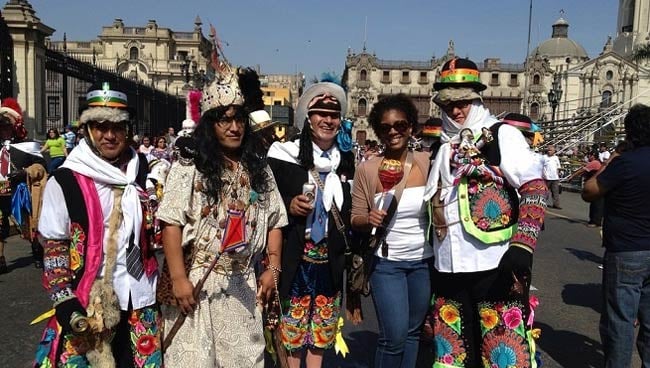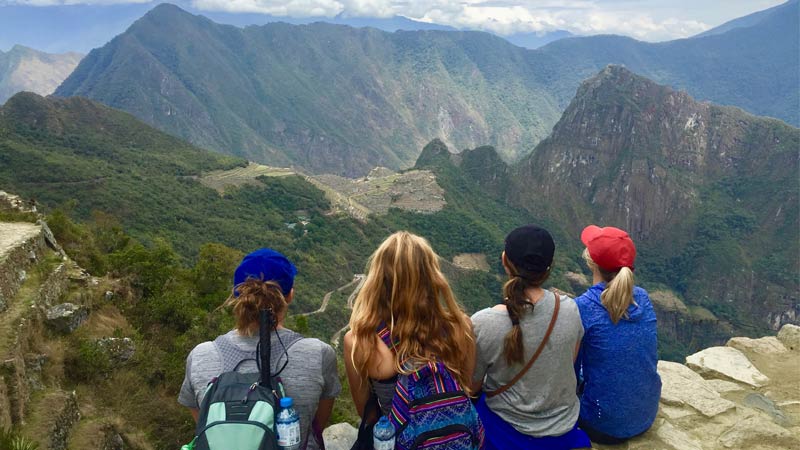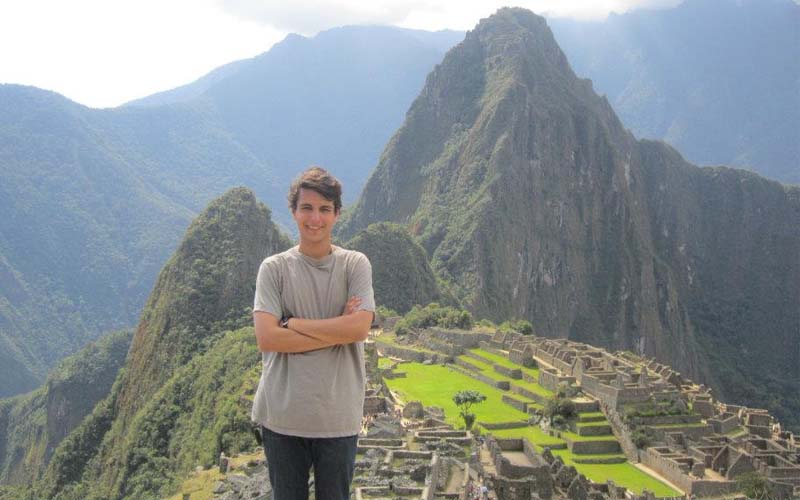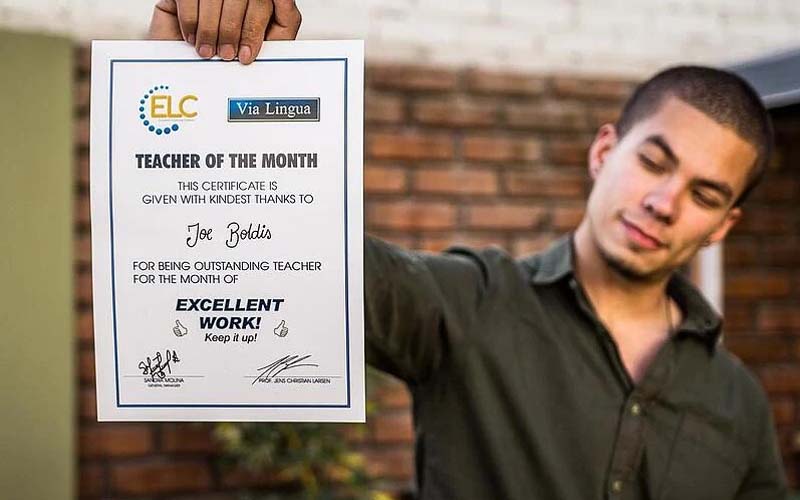9 Reasons to Teach English in Lima, Peru
Written By: International TEFL Academy | Updated: June 29, 2023
Written By: International TEFL Academy
Updated: June 29, 2023

Looking to live and work in one of South America's great cities with 500 years of history and culture?
Want to immerse yourself in the culture, cuisine and history of Latin America while getting paid to teach English?
Situated among desert valleys overlooking the Pacific Ocean, Lima is the national capital and largest city in Peru, whose metropolitan area is home to a population of 9 million. As a major center of international trade, education and tourism, Lima has developed into one of the largest job markets for teaching English in South America.
Those teaching English in Lima, Peru enjoy an opportunity to live in a city known for its magnificent Spanish architecture that has recently become of the hottest culinary centers in the world. They have even established a Boulevard of Gastronomy in the Surquillo district, turning a traditional farmer’s market into a pedestrian mall with the intention of revitalizing Peruvian cuisine and holding annual food festivals.
In addition, it provides a perfect based to explore all that Peru has to offer from the ancient Inca ruins of Machu Picchu and Cusco to the lush rainforests of the Amazon Basin.

500 Years of History
Lima was founded in 1535 on Epiphany (January 6), the Catholic holiday known as The Day of Kings, and so was named Ciudad de los Reyes - the "City of Kings" by Francisco Pizarro, the famous Spanish conqueror. Lima quickly became the most important city in the Spanish Viceroyalty of Peru and has remained a center of power ever since. This legacy can still in be seen in the fantastic Spanish architecture that dominates the city center, named Lima Centro, which has been named a UNESCO World Heritage Site for its historical and artistic significance.
If you are thinking about traveling and teaching English in South America, Lima could be a great place to get started; the Pacific Ocean, traditional Spanish architecture, innovative cuisine, and bustling nightlife awaits for you here! Check out the following can’t miss spots while teaching English in Lima...
1. Eating, Drinking & Surfing in Miraflores
Miraflores is one of the most beautiful destinations around the city. This neighborhood is home to many of the city's most popular hotels, casinos, markets, shops and active nightlife. Also, the famous Miraflores beach attracts surfers from around the world as well as paragliders and of course, sunbathers.

2. Lima’s cevicherias and pisco… salud!
In recent years, Lima has become a culinary hotbed, whose gastronomic offerings have earned the praises of such foodie gurus as Anthony Bourdain. Peruvian cuisine reflects local practices and influences from indigenous Incas and also from its Spanish, Chinese, Italian, German, Japanese and even African immigrant influences. Of course, Lima’s location along the Pacific Ocean makes it a perfect destination for seafood lovers! The signature dish of the city is ceviche, a mix of raw fish, onion and chili peppers marinated in limes and spices to create a truly fresh and mouth-watering dish. The acid of the lime “cooks” the fish, while infusing it with delicate and delicious flavors.
But the fun doesn’t finish there; there are countless other dishes; raw fish, grilled meats, hearty stews, and other exotic treats like Cuy. This staple meat is raised in many of the households in the Andes Mountain, but in the U.S. it is simply known as guinea pig. This dish is usually a bony piece of meat, barbequed or baked on a spit and served whole. It may seem a bit weird or off-putting, you should really give it a try! Another popular dish is the Aji de Gallina, which is a rich, velvety stew made with chicken and condensed milk, and the yellow aji peppers lend it a yellowish color, which is thickened with crusted white bread.
Of course, those who enjoy a refreshing will want to try one of the city's world famous pisco cocktails like a Pisco Sour made with the famous Peruvian brandy (Chile is also known for its pisco), citrus juices, sweeteners, egg whites and bitters.
3. Magic Water Circuit
Recently inaugurated in the Reserve Park, this has become one of the most popular attractions of the city. The Magic Water circuit is located in Parque La Reserva, which dates back to the late 1920’s. In 2007 the municipalities of Lima completed the construction of this popular destination. Thirteen fountains, some of them interactive, provide its visitors with a dazzling show of lasers, lights and music.
4. The Monastery of San Francisco
Lima, as is common in most cities in Peru, is home of many religious buildings, but undoubtedly San Francisco Monastery stands out from the crowd. Constructed over 100 years between 1673 and 1774, this marvelous, beautifully preserved building represents classic baroque architecture with its gilded alters, gorgeous library and ornate religious art. Underneath this grand monument lies the mysterious catacombs, where spooky tunnels and hallway in eerie darkness are lined with bones from more than 75,000 bodies that have been interred here over centuries.

5. Plaza de Armas & Lima Centro
The Plaza de Armas, also known as Plaza mayor, sits at the heart of Lima History’s center, known as Lima Centro. This was the city founded by Francisco Pizarro in 1535 and has been a center of political power ever since. In fact, during the colonial age between the 16th and 19th centuries, the government in Lima not only ruled over Peru, but parts of Chile, Ecuador and other parts of the South America as well. Known for its ornate colonial fountains, grand squares and magnificent Spanish architecture, the area is home to many of Lima’s most historic and important government buildings.
6. The Bohemian Culture of Barranco
Head south along the coast from Miraflores and you will find one of the most bohemian neighborhoods in Lima: Barranco. Renowned as the favorite hangout for local poets and artists, the district is famous for its stylish cafes, colorful restaurants, and charming traditional architecture. It is also home to a number of beaches favored by surfers and offers a broad array of great nightlife as well.
7. The Magnificent Mansions of Lima
To discover yet more of Lima's rich historical and architectural heritage, pay a visit to one (or more!) of the city's magnificent colonial mansions. Dating primarily from the 18th century, most these monumental buildings were constructed by powerful Spanish officials, merchants and military leaders and have been wonderfully preserved by their owners. Top options include the Casa Aliaga, which is still home to the descendants of Jeronimo Aliaga, a top associate of Pizarro himself and has been in the family since the 16th century.
Another beautiful example of colonial architecture is the 18th century Torre Tagle Palace, which was built by a high-ranking Spanish naval officer. Known for its Moorish inspired balconies - a common feature in many colonial era buildings - it currently houses the Peruvian Ministry of Foreign Affairs. Note that many of the most beautiful mansions in Lima can only be visited on official tours or by appointments that you can arrange through a local tour operator.

8. The Views of Cerro San Cristobal
For unforgettable city views, head to the hill of Cerro San Cristobal, which rises above the city in northeast of downtown Lima. Depending on how clear it is, you will enjoy great views of the surrounding area's colorful houses, downtown Lima, and even the Pacific Ocean. While on the hill, check out the small site museum, which features a fascinating collection of photos of historic Lima.
9. Discover's Lima's Past in City Museums
Few cities in Latin America boast as much history as Lima and the city is home to some fantastic museums that offer great opportunities to explore not only the history of the city itself, but Peru's pre-Columbian heritage and the nation's fantastic natural treasures. As a nation that is home to such diverse landscapes as the Amazon Basin and the Andes Mountains, Peru boasts a fascinating broad breadth of natural history, including flora and fauna, that can be explored at the Museo de Historia Natural.
To delve into the ancient Inca and Pre-Columbian history of Peru, head to the Museo Nacional de Arqueologia, which hosts a world class collection of archeological, anthropological and historical artifacts. But if you are going to visit just one museum in Lima, let it be the Museo Larco. Home to a 4,000-piece private collection housed in an 18th century mansion built on top of a Pre-Columbia pyramid, the Museo Larco boasts and exquisite collection of Pre-Columbian artifacts that includes world-renowned mummies and even ancient erotic artwork.
Posted In: Teach English in Peru, Teach English in Latin America, Lima
International TEFL Academy
Founded in 2010, International TEFL Academy is a world leader in TEFL certification for teaching English abroad & teaching English online. ITA offers accredited TEFL certification courses online & in 20+ locations worldwide and has received multiple awards & widespread recognition as one of the best TEFL schools in the world. ITA provides all students and graduates with lifetime job search guidance. ITA has certified more than 40,000 English teachers and our graduates are currently teaching in 80 countries worldwide.
Want to Learn More About Teaching English Abroad & Online?
Request a free brochure or call 773-634-9900 to speak with an expert advisor about all aspects of TEFL certification and teaching English abroad or online, including the hiring process, salaries, visas, TEFL class options, job placement assistance and more.







